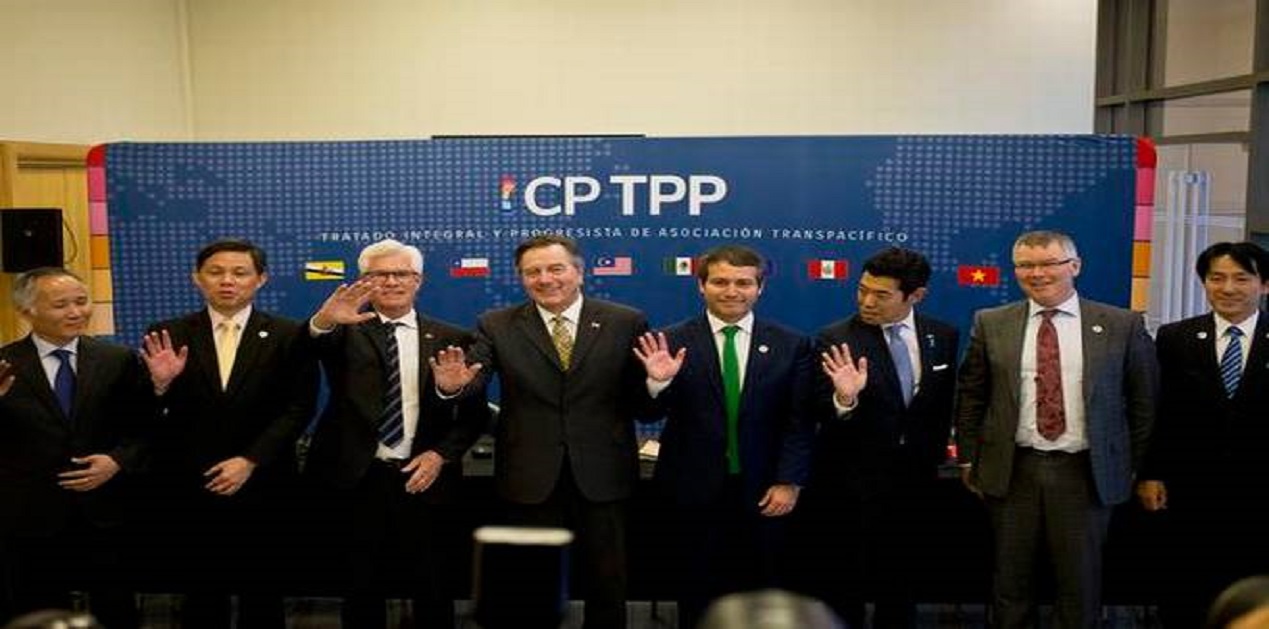Taiwan filed an official application on 22 September 2021 to join the Comprehensive and Progressive Agreement for Trans-Pacific Partnership (CPTPP) trade group amid concerns of opposition from China. Taiwan’s application came about a week after Beijing submitted its own application on 16 September 2021 and if it is approved first, Taiwan’s position could be vulnerable. Beijing is likely to oppose Taiwan’s application since it has been obstructing Taiwan in international arena with a view to isolate the island country. Taiwanese experts have warned that if China was allowed to join, Taiwan could face more obstacles in becoming part of a wider regional trade alliance.
What is this CPTPP and why it is important for those countries which join? It is a trade agreement signed on 4 February 2016 among Australia, Brunei, Canada, Chile, Japan, Malaysia, Mexico, New Zealand, Peru, Singapore and Vietnam. Touted as the Trans-Pacific Partnership (TPP), it never entered into force after the US withdrew from it soon after the election of President Donald Trump. TPP was originally a group promoted by then-President Barack Obama as part of Washington’s increased emphasis on relations with Asia. In January 2017, President Trump announced US withdrawal from the original TPP agreement. President Joe Biden has not rejoined the group.
The eleven signatories have combined economies representing 13.4 percent of global GDP at approximately $13.5 trillion, 15 per cent of global trade, with a population of 500 million people located in the growing and increasingly rich Indo-Pacific region making the CPTPP one of the world's largest free trade areas by GDP, along with the US-Mexico-Canada Agreement, the European Single Market, and the Regional Comprehensive Economic Partnership (RCEP). It is a high-level agreement that not only reduces trade tariffs for goods, but also sets new rules in areas such as services, investment, intellectual property, digital trade and state-owned enterprises.
After the US withdrawal, the TPP signatories agreed in May 2017 to revive the agreement. Japan took the lead. In January 2018, the CPTPP was created as a successor agreement after tweaking some provisions of the original TPP agreement. The formal signing ceremony was held on 8 March 2018 in Santiago, Chile. The agreement specified that its provisions would enter into effect 60 days after ratification by at least half the signatories (six of the eleven). Mexico became the first country to ratify the CPTPP on 28 June 2018, followed by Japan as the second on 6 July 2018, with Singapore being the third on 19 July. After Australia ratified the agreement as the sixth nation on 31 October 2018, the agreement came into force. The CPTPP includes agreements on market access, movement of labour and government procurement.
The CPTPP has evoked plenty of interest by major economies. On 1 February 2021, the UK formally applied to join the CPTPP, being the first non-founding country to do so. UK’s case is pending. It is a smart move by the UK as the significance of its accession goes beyond strict trade interests. [1] At a time of creeping protectionist sentiments and looming threats to rule-based commerce, the CPTPP members hope the agreement would contribute to defending the principles of global free trade and rule-based commerce. This seems to be the mission of the CPTPP. Japan supports UK’s candidature for the pact.
However, China’s application to join the CPTPP has evoked much more interest than any other country. In May 2020, Chinese Prime Minister Li Keqiang hinted China’s interest to join the mega pact. Then in November 2020 during the Asia-Pacific Economic Cooperation (APEC) summit, Chinese President Xi Jinping said China was actively considering joining the CPTPP. However, China’s application might not go through as the US despite not being a member could block China’s application by exploiting provisions of the US-Mexico-Canada Agreement that prevents Canada and Mexico vote in favour of the Chinese application. With already strained relations between Australia and China over trade issues, the former has already indicated that it would oppose China’s application until China halts trade strikes against Australian exports and resumes minister-to-minister contacts with the Australian government. Australia has already taken up its trade issues with China to the WTO complaining on restrictions imposed by China on exports of barley and wine. With such frosty ties between China and Australia, China’s case could lose traction.
Against this background, Taiwan’s application to join the CPTPP makes relevant for analysis. For a background, Taiwan had evinced interests to join the former TPP in 2016 but after the US withdrew during the Trump administration, and the TPP became CPTPP, Taiwan renewed its interest to join the mega trade pact. In December 2020, it announced that it would make an application to join CPTPP after it held formal consultations with existing members. Taiwan reiterated its intention again to apply in February 2021. Then on 22 September 2021, Taiwan finally applied to join the CPTPP,[2] few days after China had submitted its request to join the CPTPP. [3] This is one of the major policy objectives of Tsai Ing-wen’s government in Taiwan.
There is no doubt that Taiwan’s application to join the mega pact could rattle China. Taiwan is seized of the fact that China has launched relentless campaign to isolate Taiwan in the international arena and lured small nations having diplomatic ties with Taiwan with liberal economic assistance to switch allegiance in favour of Beijing. Taiwan has a legitimate fear that if China is allowed to join the CPTPP ahead of Taiwan, it will endanger Taiwan’s application and could face more obstacles in becoming part of a wide regional trade alliance.[4]
In recent times, Beijing has been routinely intimidating Taiwan by the threat of force, besides deploying its naval warships into the Taiwanese waters. Even on 2 October 2021, China marked its foundation day with the largest ever incursion by the Chinese Air Force into Taiwan’s Air Defence Zone. Taiwan fumed and its fighters scrambled against 38 Chinese aircraft in two waves and deployed missile system to monitor them. Beijing might further toughen its stance if Taiwan which has support from many democratic countries gets through the CPTPP and not China. Despite the fact that Taiwan has remained a self-governed country for over seven decades, Beijing has been claiming full sovereignty over the island nation. [5] To defend its sovereignty, Taiwan has been arming itself and strengthened strategic ties with democracies and rivals of China, mainly with the US. Because of China’s assertiveness and aggressive postures, both the South China Sea and the Taiwan Straits have emerged as major flashpoints in the Indo-Pacific region. Being assured of the US military backing, its military assets have acquired quality to withstand Chinese threat of complete unification. So far, Taiwan has resisted from declaring formal independence being aware of the immediate consequences and just wants to live as it is today without threat from Beijing. Taiwan could be no match in terms of military parity but if any conflict starts on the Taiwan issue, other countries shall be inevitably drawn in. That scenario is best avoidable in the interests of all stakeholders and regional peace.
As an ally of the US and for its own considerations stemming from concerns over China’s aggressive posture on the Senkaku islands in the East China Sea, Japan is ready to welcome Taiwan into the CPTPP fold. [6] Foreign Minister Toshimitsu Motegi remarked that Japan responds to Taiwan’s application from a strategic perspective, based on Japanese people’s understanding. Taiwan has also sought Australia’s help to join the mega pact. Given the strained ties between China and Australia over trade issues, Taiwan’s reaching out to Australia adds another dimension to the troubled relationship as Beijing has been trying to isolate Taiwan diplomatically what it regards as a “rogue province”. In fact, Taiwan even questions China’s suitability for China’s inclusion because of its restrictive trade practices. Since China says it has the right to represent Taiwan’s 23.5 million people in international bodies regardless of the island’s claim that it is an independent country, applications from both China and Taiwan could be problematic.
In fact, Beijing has numerous issues, from internet censorship to labour rights that call into question whether it can reach the CPTPP’s high standards. Those requirements are set to “challenge China’s very fundamental systems”. There is no clarity at the moment on how the member nations shall review the applications from China and Taiwan. Seen as an important economic counterweight to China’s growing influence, the CPTPP is faced with the dilemma on taking a decision on China’s and Taiwan’s applications.
As regards India, it stays away from such multilateral economic pacts and considers that these would not serve its economic interests. If India decided to stay out of the RCEP because of the above considerations, its interest to join the CPTPP does not merit any consideration for any academic analysis or scenario-building exercise.
References
(The paper is the author’s individual scholastic articulation. The author certifies that the article/paper is original in content, unpublished and it has not been submitted for publication/web upload elsewhere, and that the facts and figures quoted are duly referenced, as needed, and are believed to be correct). (The paper does not necessarily represent the organisational stance... More >>
[1]Hiroshi Matsuura, “Why Joining the CPTPP is a smart move for the UK?”, 19 March 2021, https://www.chathamhouse.org/2021/03/why-joining-cptpp-smart-move-uk
[2]Shloak Prabhu, “Taiwan Applies To Join CPTPP Trade Agreement Amid Concerns Of Opposition From China”, https://www.republicworld.com/world-news/rest-of-the-world-news/taiwan-applies-to-join-cptpp-trade-agreement-amid-concerns-of-opposition-from-china.html
[3]China applies to join Pacific trade pact abandoned by Trump”, 18 September 2021, https://www.dailyexcelsior.com/china-applies-to-join-pacific-trade-pact-abandoned-by-trump/
[4] “Taiwan says ‘risk’ to its Trans-Pacific trade pact bid if China joins first”, 23 September 2021, https://the-japan-news.com/news/article/0007804204
[5]“China vows to keep Taiwan out of Pacific Rim trade group”, The Asahi Shimbun, 29 September 2021, https://www.asahi.com/ajw/articles/14450267
[6]“Japan welcomes Taiwan’s application to join TPP free trade deal”, 23 September 2021, https://the-japan-news.com/news/article/0007803894
Image Source: https://www.thehindu.com/news/international/taiwan-asks-to-join-trade-group-says-china-might-interfere/article36625841.ece











Post new comment